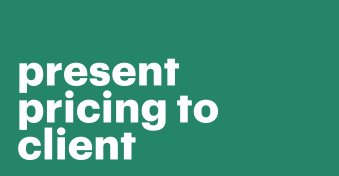Have you ever gotten trapped in a situation where you needed to explain elementary concepts, and when you tried to put them in simple terms — bam! — you hit a mental roadblock, realizing you didn’t get the essence of the “obvious?”
When you’re speaking about your sales process and its steps with your sales team, which term do you use: “Sales pipeline”, or “Sales funnel”?
Do you begin to feel uncertainty just now? Let us help you dispel these doubts.
In this article, you’ll discover unambiguous definitions of both terms, as well as their goals and benefits.
Let’s go!
The difference between a sales pipeline and a sales funnel in a nutshell
To quickly grasp the point: think stages vs steps.
When you guide a lead toward a sale, a pipeline is all about the various stages your deal goes through (for example, “contact made” or “proposal sent”).
On the other hand, a funnel focuses on the steps taken to move your prospect from attention to buying (“awareness,” “consideration,” and “decision” are examples here).
Both terms are broadly used in CRM systems like Salesforce, Monday.com, or Pipedrive. And they describe similar processes, offering visual representations of buyers’ journeys — but from different vantage points.
Visualizing the difference
Let’s use the table below to show what sets the sales funnel apart from the sales pipeline.
This cheat sheet will help you nail down the distinctions between these two terms.
| Aspect | Sales pipeline | Sales funnel |
|---|---|---|
| Perspective | Shows where sales reps are in their selling journey | Shows where prospects are on their path to turn into customers |
| Focus | Centers on sales teams, their activities, and the sales process | Centers on understanding customer behavior |
| Structure | Linear: sales reps guide prospects stage by stage. | Non-linear: prospects can move forward and backward. |
| Insights | Sheds light on sales rep performance | Highlights prospect behavior, their pain points, and buying triggers |
| Customizations | Sales reps can tweak stages to speed up the process and better match customer needs. | Stages remain the same for diverse customers. |
| Visualization | For clear understanding, it can be presented as a linear progression | To display every step, it’s easier to use a funnel-shaped diagram |
| Lead nurturing | Focus on strengthening relations with potential customers at each stage | Centers on moving prospects from one funnel stage to the next |
What is a sales pipeline?
The sales pipeline is the journey of a prospect on their way to becoming an existing customer, moving through certain stages planned ahead by sales reps.

Once one stage is finished, the prospect moves to the next in the sequence.
It all starts with sales reps generating leads (for example, by writing sales emails that convert) or just attracting people or businesses who may convert.
Reps determine if those potential customers have a real need for a product or service and have enough budget — and form a list of qualified leads.
Importantly, qualified prospects must be decision-makers in their respective companies.
Sales reps directly communicate with qualified leads, arranging initial meetings via Zoom, Slack, or other platforms.
If negotiations are a success, a sales rep prepares and sends a sales proposal.
They may also create advanced, customized quotes, depending on what exactly they sell.
When a prospect becomes a customer, all involved parties sign the agreement.
After that, sales reps shift their focus: turn satisfied customers into loyal advocates.
Goals and benefits of a sales pipeline
The main goal of the sales pipeline is to help you increase your revenue within the sales cycle.
By implementing the sales pipeline into your marketing processes, your business can reap substantial benefits. Here are a few examples of what we mean.
Faster deal closure
This is one of the most attractive benefits tied to using the sales pipeline.
Once you have a helicopter view of your sales activities, you can easily identify obstacles that are slowing down deal closure.
More transparency and efficiency
The pipeline helps you see the big picture and make strategic decisions to help your salespeople work efficiently.
Once the sales pipeline is ready, track the stages where your prospects are, analyze issues they might face, and unlock insights that will help prospects move to a subsequent stage.
Better resources allocation
Knowing where your prospect is in the pipeline also helps you better distribute your marketing resources.
For example, if your target prospect is currently at the consideration stage, you can prepare case studies to show them more personalized content.
Easier team tracking
The pipeline helps track the activity of each sales team member separately. Knowing the initial goals and tasks assigned, you can clarify who works with a “full steam ahead” approach — and who doesn’t.
What is a sales funnel?
While the pipeline is focused on the stages your prospect travels through to become your customer, the sales funnel is based on the steps taken to improve conversion rates between the neighboring stages.

The sales funnel is a model describing the whole customer journey — from the first engagement with a brand to becoming a brand advocate — all through the prism of the number of leads dropping from stage to stage.
The simplest model of the sales funnel includes awareness, consideration, and decision, which leads customers to purchase a product or service.
Prospects might first engage with your brand via content marketing, paid ads, or search engine results mentioning your product or service — and form their first impression.
If a prospect is positive enough to continue interacting with your brand, they start looking for additional info about your business (articles, testimonials and customer reviews, etc.)
Your transparent reputation and seamless website or mobile application will help you succeed at this stage.
And it’s the job of your sales reps job to provide a prospect with meaningful data to foster a positive buyer decision.
Once your lead has received a sufficient amount of data, they can make a decision and either move to the next stage or leave the funnel.
Even if 5% of the initial number of prospects get here, it still means you’ve built a successful funnel.
After your prospect has turned into your customer, think about recurring purchases and keep your customers updated on your product, service, or business.
If your goods or services cannot be sold twice to a single customer, always emphasize user satisfaction — they can buy your other products or services.
As a result, customers may start advocating your product or service to others with no strings attached.
Goals and benefits of a sales funnel
The sales funnel’s main goal is to manage conversions and force the marketing machine to work profitably.
This means conversion rates at all stages must be high enough to make the cost of generating and nurturing one lead into a customer affordable when compared with the revenue that customers will generate for you in the long run.
The benefits of using the funnel within your sales activities are as follows:
Lower sales costs
Once you improve your conversion rate, you get more customers from the same number of leads.
That means cutting down on costs for generating and nurturing leads.
That makes the sales funnel a powerful tool for saving on your marketing budget.
Fewer mistakes and fails
By using a sales funnel, you can avoid sales and marketing failures like missed opportunities or wasted resources.
When you notice unexpectedly low conversion rates or sudden changes, you can use diagnostic tools to fix mistakes early on and make your marketing activities run smoothly and efficiently.
Fine-tuning the sales process
A sales funnel can help you simplify how you understand and polish your lead generation, nurturing, and sales activities.
For example, when the number of initial leads flowing to the awareness stage of your funnel is insufficient, you can instantly spot it and elaborate on your traffic-generating channels and methods.
Sales pipeline and sales funnel combined
If you use these tools together, you can uncover new avenues for your brand:
- For complicated products and services, which require long customer journeys with many different stages, a combination allows you to understand if your customer journey model has enough stages — or if it isn’t properly segmented.
- Marketing teams can use sales pipeline reports and sales funnel reports based on data gathered from both models to develop new sales materials for each stage of the process, including the generation of new leads.
- Product development teams can use sales feedback to understand potential customers’ questions and update their sales strategies.
Step up your sales strategy with PandaDoc
The sales pipeline and sales funnel have similar long-term objectives — happy customers buying your products/services — but they’re different at the same time.
The pipeline is aimed at controlling your customer journey based on where they are in the stages they’re traveling through.
The funnel is focused on conversion rates between the neighboring stages of the customer journey.
PandaDoc can help you optimize and streamline your sales processes from any perspective.
You can use sales automation software to simplify and streamline repetitive tasks, helping your salespeople focus more on enhancing relationships with prospects.
Moreover, you can automate proposals for better collaboration, document tracking, and faster deal closure.
Ready to unlock the full potential of your sales strategy? Schedule a demo today to learn more.
Originally published January 20, 2016, updated July 23, 2024
Disclaimer
PandaDoc is not a law firm, or a substitute for an attorney or law firm. This page is not intended to and does not provide legal advice. Should you have legal questions on the validity of e-signatures or digital signatures and the enforceability thereof, please consult with an attorney or law firm. Use of PandaDocs services are governed by our Terms of Use and Privacy Policy.


